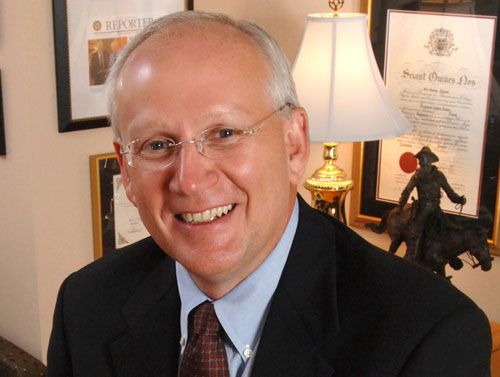Epidemiology comes into its own at centenary AACR meeting
DENVER—In 1974, Joseph Fraumeni Jr., MD, MSc, served as a member of the AACR annual meeting program committee. “At the time, epidemiology did not have a prominent place on the program,” Dr. Fraumeni said during the grand opening session of the 2009 AACR meeting. “In fact, only one abstract related to epidemiology was submitted, and it was mine. Since it was assigned to me for review, I promptly accepted my presentation.”

DENVER-In 1974, Joseph Fraumeni Jr., MD, MSc, served as a member of the AACR annual meeting program committee. "At the time, epidemiology did not have a prominent place on the program," Dr. Fraumeni said during the grand opening session of the 2009 AACR meeting. "In fact, only one abstract related to epidemiology was submitted, and it was mine. Since it was assigned to me for review, I promptly accepted my presentation."
Thirty-five years later, epidemiology has gained considerable ground: Dr. Fraumeni was given the 2009 Award for Lifetime Achievement in Cancer. He is director of the division of cancer epidemiology and genetics at the National Cancer Institute in Bethesda, Maryland. Along with Frederick P. Li, MD, Dr. Fraumeni discovered Li-Fraumeni syndrome, a rare genetic disorder that predisposes young people to certain cancers including breast cancer.
"This award is especially meaningful to me since the annual meeting of the AACR is now the principal forum for epidemiology, genetics, and related science to present and hear about the latest developments in cancer research," he said. "The program is now replete with sessions of enormous interest to epidemiologists and population scientists. The epidemiology community has never been so energized about its role in accelerating the progress to discovering the causes of cancer and the means to cancer prevention."
Dr. Fraumeni was one of several award winners at the opening session. Other honorees included the following:
• The Team Science Award was bestowed on the St. Jude Children's Research Hospital Acute Lymphoblastic Leukemia Team, based in Nashville. Ching-Hon Pui, MD, chair of the oncology department at St Jude's, accepted the award on behalf of his 11-member team. Dr. Pui said that the cash prize associated with the award would be used to fund travel for trainees to future AACR meetings.
• Kathy Giusti and Nicholas P. Valvano were individually given the AACR Centennial Medal for Distinguished Public Service. Ms. Giusti is the founder and CEO of the Multiple Myeloma Foundation and the Multiple Myeloma Research Consortium. The foundation has an open-source tissue bank that houses more than 2,000 bone marrow biopsies with matching peripheral blood, she said. Mr. Valvano is the CEO of The V Foundation, which has raised more than $70 million for research grants. Through an endowment program that sustains the foundation's infrastructure, all donations and revenue go directly to fund cancer research.
• The executive leadership council for Stand Up To Cancer also was given a centennial medal. Stand Up To Cancer hosted a benefit concert last year that was aired simultaneously on all three major TV networks. Council member Noreen Fraser, who has stage IV metastatic breast cancer, told AACR attendees that the group "will do a TV show every year. We will use the Internet, and we will use television and film as a way to reach the public to create awareness ... this is the way that we are going to make the money to get to you so that you can find the answers."
• Finally, Sen. Arlen Specter (R-PA) was given a centennial medal for spearheading additional funding for the NCI.

"We are fortunate to be living in an era where we have the tools and the technologies to explore cancer's vast complexities," said Raymond N. DuBois, MD, PhD, 2008-2009 AACR president. "By bringing together many disciplines from a broad spectrum of fields, we are now able to showcase the spectacular science and breakthroughs that are truly making a difference in patient care."
Frontline Chemo-Free Regimen Supported in HR+/HER2+ Breast Cancer Therapy
January 1st 2024Combining anastrozole with palbociclib, trastuzumab, and pertuzumab as a frontline therapy for hormone receptor–positive, HER2-positive breast cancer may avoid some of the toxicities associated with chemotherapy, says Amy Tiersten, MD.